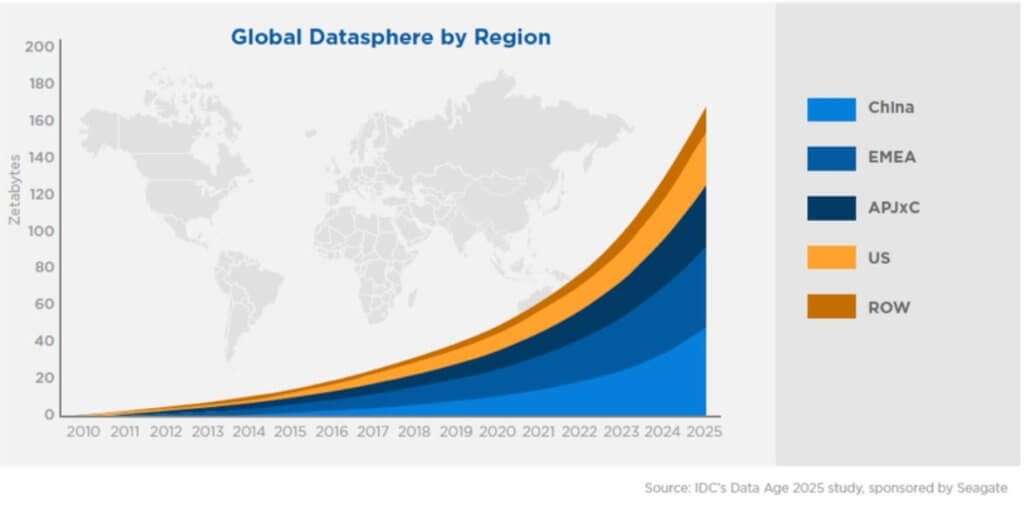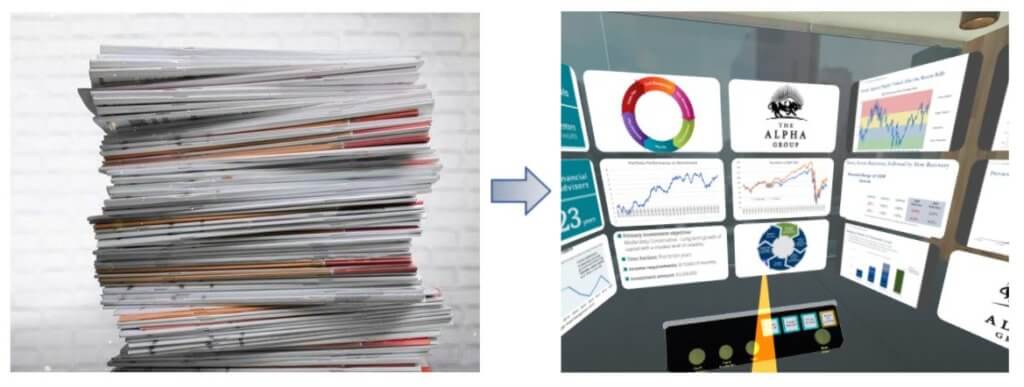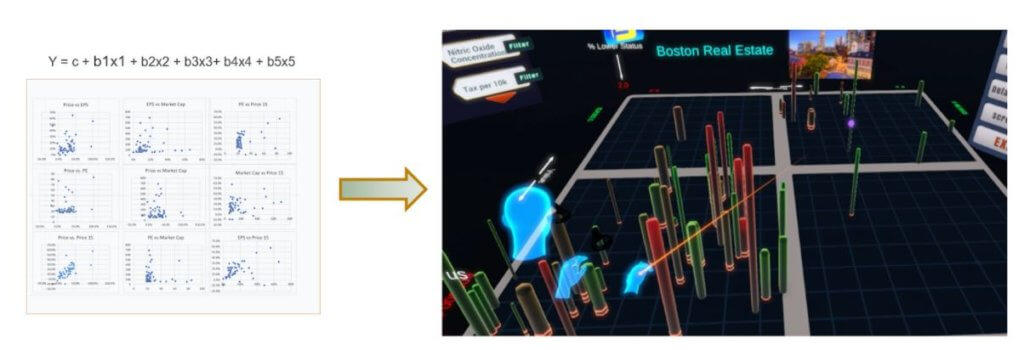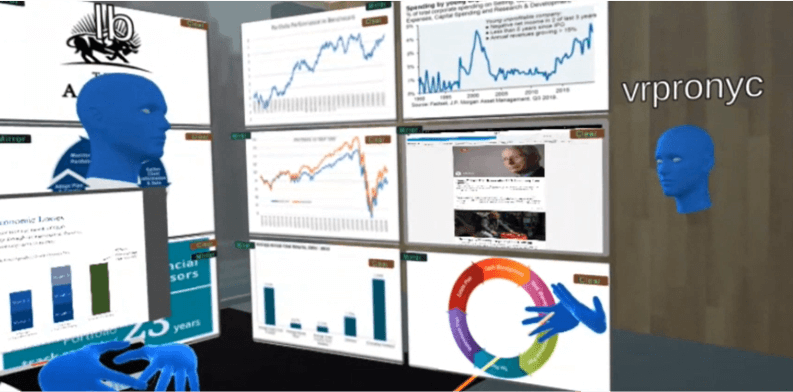We live in an age of enormous data creation. The amount of global data generated per year has increased by more than 30x over the past 10 years, and it is projected to more than quadruple over the next five. The problem for humans is no longer access to data — it’s how to possibly process the immense amount of data that is now at our fingertips.

During my 14 years at Morgan Stanley as an investment analyst, by far my biggest challenge was trying to process a daily deluge of information.
In 2016 I first started using virtual reality hardware, and I quickly had two thoughts: first, VR is going to be the most revolutionary technology of my lifetime; and second, VR can transform the process of data analysis and presentation. Specifically, I believed (and have since gained conviction) that virtual reality can make data analysis faster and more effective while making the presentation of that analysis clearer and more memorable.
Big Data Problems That Virtual Reality Helps Solve
There are a couple of big data problems that VR helps solve:
1. How to View and Process Large Amounts of Data at the Same Time
Imagine trying to do a puzzle by only looking at one puzzle piece at a time. There is a reason that the first step to a puzzle is to lay out all the pieces, and information analysis is a lot like doing a puzzle. An analyst is looking for a couple of key pieces that fit together in a particular way, and it is a lot easier to put together a puzzle if you can view many pieces at the same time.
One of the things I love about virtual reality is that anything that can be imagined can be created, and the number one thing I wanted as an investment analyst was as many screens as possible.

VR allows an analyst to have an entire roomful of screens, and to save configurations of these screens to create specific rooms devoted to different topics. So instead of a traditional file system, laden with stacks of printed charts (my previous modus operandi as an analyst), I can have a list of digital rooms that I can walk into and see walls of information displayed simultaneously, like a detective who has taped documents on the walls to try to find connections between disparate pieces of information.
2. How to Understand and Act on Multi-Dimensional Relationships
There’s a reason that 3D data visualization is not used often on flat-screens; it is simply too hard to work with and decipher a 3D chart from a 2D display. However, 3D charting does provide many benefits when used in an actual 3D space.
Life is simply not two-dimensional (and many times not even three or four-dimensional). Any given phenomenon is driven by a number of underlying factors that are interacting in complex ways, and as variables are added to an analysis, the relationships embedded in the data increase exponentially.
For example, to compare the relationships in six variables, an analyst could either view a 6-dimensional chart in virtual 3D space (X-axis, Y-axis, height, width, color, etc.), or they could view 71 different charts and regression equations in 2D space. Obviously, it is faster to analyze one item than 71, and with one centralized visualization, the analyst is also less likely to miss a key relationship.

Another problem with complex data relationships is that it is difficult for decision-makers to act on multi-variable relationships without actually being able to visualize them.
For example, an analyst (or an AI algorithm for that matter) might produce a regression model that predicts an outcome based on 5 independent variables. But, is a manager really going to pull the trigger on a major investment just based on an equation? The ability to actually see a multi-variable relationship in a 3D visualization makes a world of difference when it comes to acting on statistical models.
3. How to Communicate Data as Effectively and Memorably as Possible
Studies show that people remember information longer if it is presented in virtual reality. This result is not surprising. Not only is an audience more focused when in VR, free from distraction, but the immersion of a VR experience triggers more areas of the brain, forming a deeper connection with the presented material.
In addition to allowing people to meet “face to face” from anywhere around the world (obviously a huge cost-saver), VR allows for a more effective and memorable presentation of complex concepts, both from the ability to use interactive 2D and 3D presentation tools (such as a multi-monitor presentation space and multi-dimensional charting), but also from the immersive nature of VR itself.

The shift from working in 2D to 3D digital space, as enabled by VR, is one of the biggest trends that everyone in the workplace will face over the next decade. This shift will be particularly transformational for data analysts, providing significant opportunities to increase the effectiveness of the analysis and presentation process.
Guest PostAbout the Guest Author(s)

Andy Maggio
Andy Maggio is Founder and General Manager of D6 VR, a subsidiary of The Glimpse Group focused on data analytics and presentation. D6 VR provides tools for multi-dimensional data visualization while facilitating collaboration and presentation in virtual and augmented reality. Andy is a former Morgan Stanley executive, with fifteen years of experience with data-intensive capital markets analysis. He is a Chartered Financial Analyst and has a Masters Degree in Economics.




